How Long Does it Take to Grow Potatoes: A Complete Guide
Potatoes, or Solanum tuberosum, are a staple in many diets and, even more importantly, they are a delicious and economical food to grow. I love to grow potatoes to increase our self-sustainability and provide nutritious food for our family all year long.
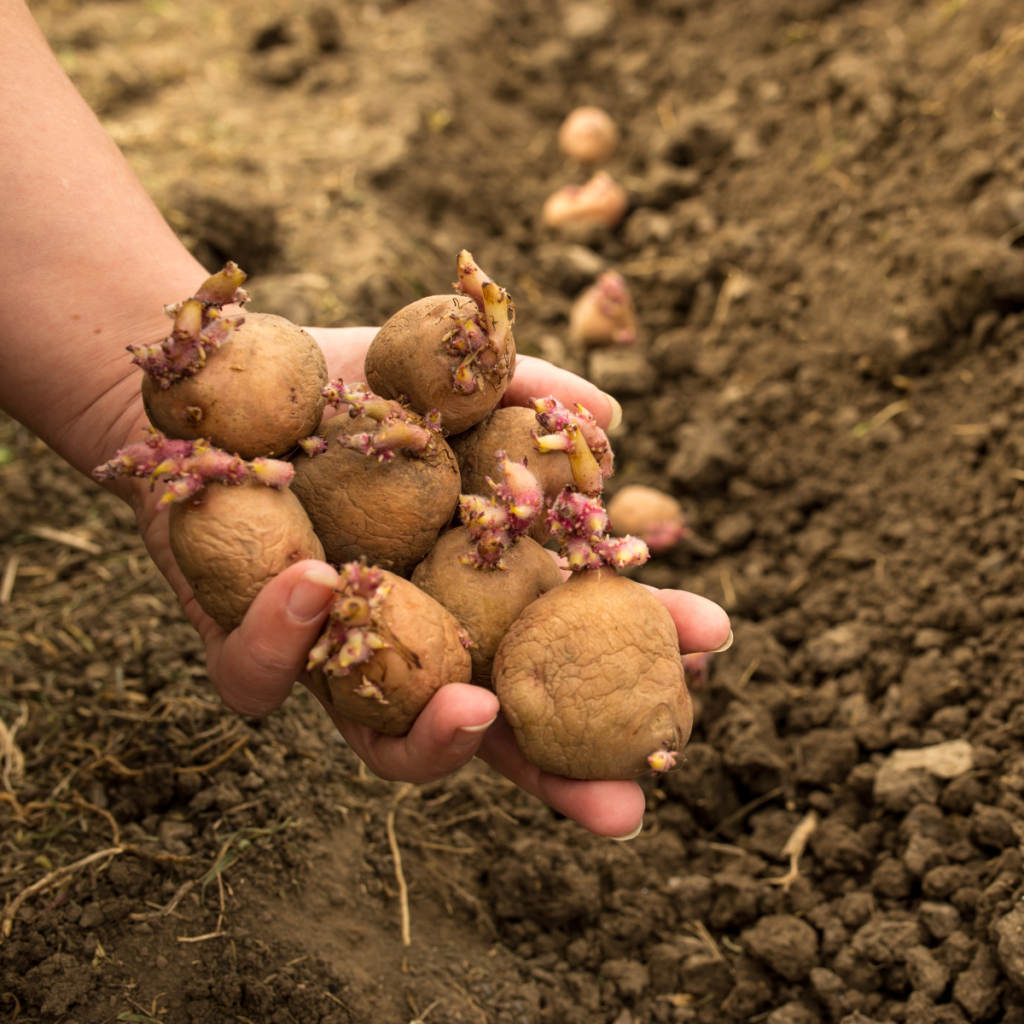
Growing potatoes is fairly, simple. In fact, you don’t have to even dig a hole for them if you don’t want to. Check out my guide to growing potatoes the lazy way here. When new gardeners are starting out growing potatoes, one of the most asked questions new growers have is: How long do potatoes take to grow?
The answer depends on several factors, including the type of potato, your climate, and how well you manage your growing environment.
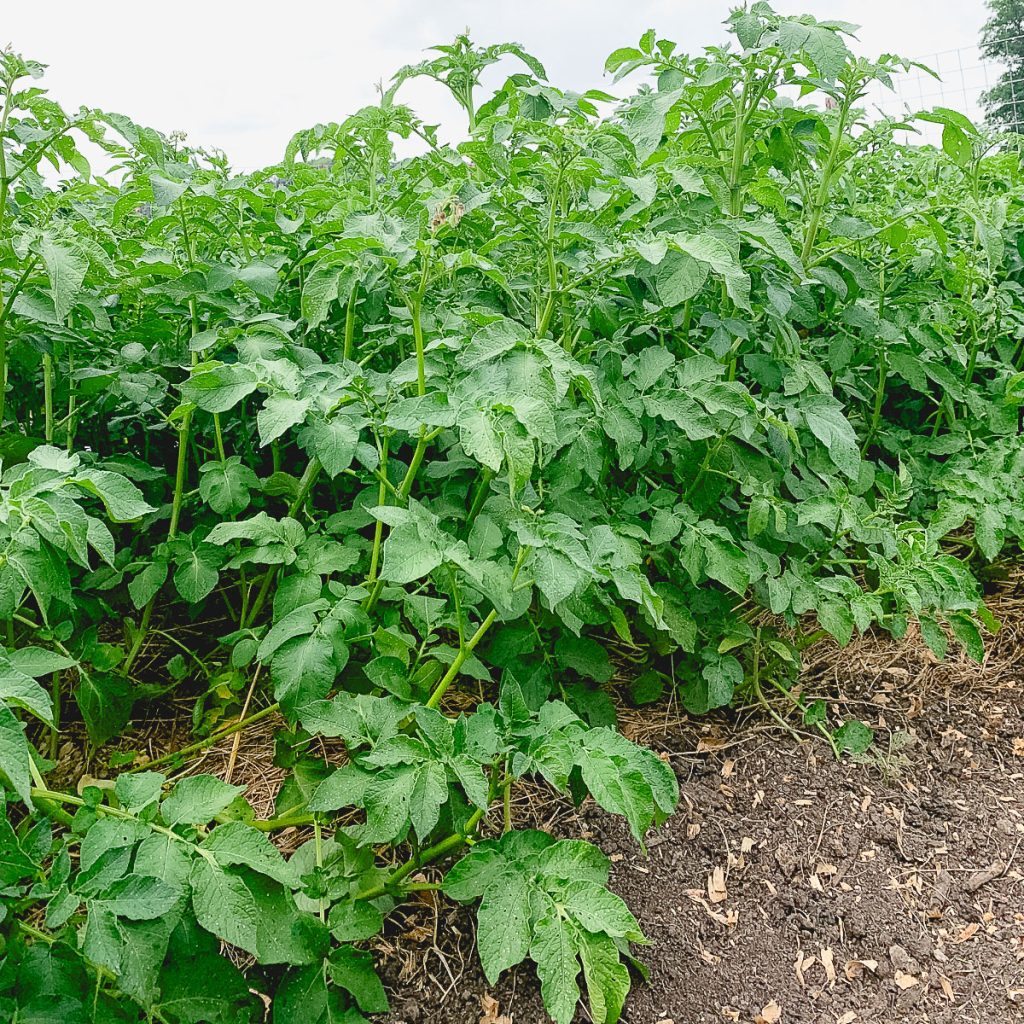
As an Amazon Associate, I earn from qualifying purchases. This post may contain affiliate links, which means I make a small commission at no extra cost to you. See my full disclosure here.
Let’s dive into the different potato varieties and how long they take to grow, and how to get the best harvest!
How Long It Takes to Grow Different Varieties of Potatoes
- Russet Potatoes (90-120 days) Russet potatoes, the classic choice for mashed potatoes and baked spuds, typically take 90 to 120 days to grow, depending on the climate. In cooler climates with a shorter growing season, they may take closer to the 120-day mark. In warmer regions, they may mature a little sooner. You’ll know they are ready for harvest when the plant has died back, and the mature tubers are easily dug up.Best Uses: Russets are great for baking, frying, or making mashed potatoes due to their fluffy texture.
- Fingerling Potatoes (80-110 days) Fingerling potatoes are much smaller and a little quicker to mature, typically ready in 80 to 110 days, depending on the variety and climate. Because these potatoes are smaller they can be harvested earlier in the growing season as “new potatoes” making them ideal for those who want potatoes even sooner. “New potatoes” refer to the baby potatoes on a growing plant that are harvested before they fully mature. Fingerling potatoes have a more waxy texture, which helps them hold their shape when cooked.Best Uses: Fingerlings are perfect for roasting, grilling, or making into potato salads due to their rich flavor and firm texture.
- Red, White, Yellow, and Purple Potatoes (90-120 days) Other popular varieties produce colorful potatoes in shades like red, white, yellow and purple.This is a very broad group, but some of my personal favorites include: Adirondack blue, Pontiac Red, and Yukon Gold. These varieties generally require 90 to 120 days to mature, similar to russet potatoes, but vary by variety. These potatoes are known for their variety in skin color and flavor, and each type offers its own unique characteristics.
Best Uses: Red potatoes are great for potato salads, white potatoes are versatile and good for all-purpose cooking, yellow potatoes are ideal for mashing, and purple potatoes can add a colorful twist to any dish.
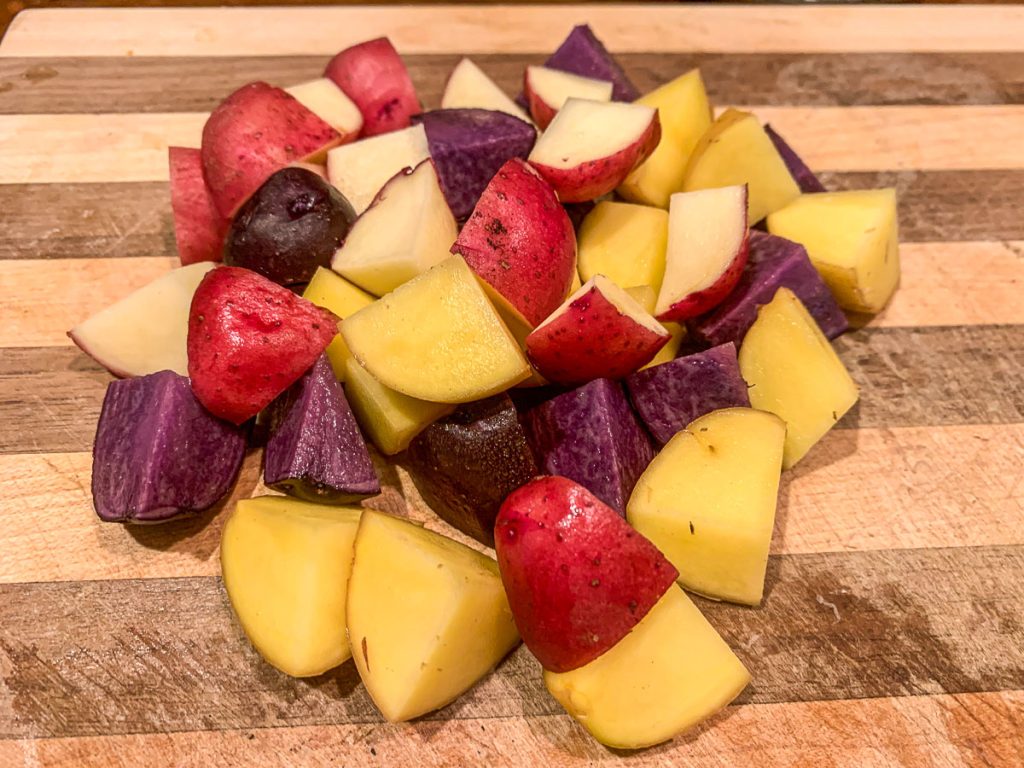
How Potatoes Grow: What Are Seed Potatoes?
While potato plants can produce seeds, gardeners rarely use them to plant potatoes. There are several reasons most gardeners don’t grow potatoes from seeds: Many modern varieties produce sterile or partially sterile seeds and due to cross pollination, the seeds won’t always produce the same kind of potatoes as the mother plant.
For these reasons, potatoes are typically grown from seed potatoes. Seed potatoes are small, sprouted potatoes that you can purchase or save from previous harvests.
I prefer to save my own seed potatoes from the storage potatoes we don’t eat through in the winter. If you can find sprouted potatoes at the grocery store, you can even use those as seed potatoes.
Just ensure that the green sprouts are healthy and strong. Some grocery store potatoes are sprayed with sprout inhibitors, so results may vary.
When planting seed potatoes, it’s important to place them in well-drained soil, ensuring good soil moisture and avoiding direct sunlight. Be sure to allow the seed potatoes to sprout in early spring before planting, ideally after your last frost date has passed.
This gives them the head start they need to grow strong. Potatoes can also be grown in hay following the Ruth Stout Method. This is especially helpful for gardeners with hard and rocky soil.
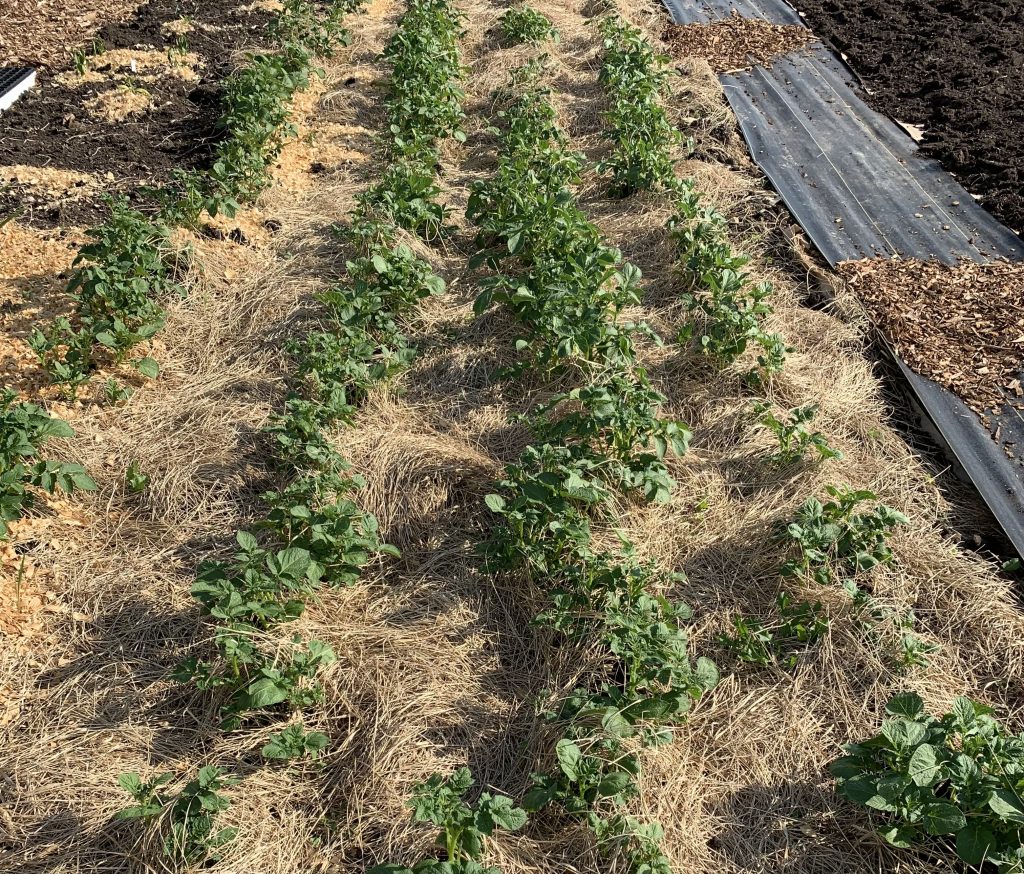
Factors That Can Affect the Potato Crop:
- Soil Temperature: Potatoes grow best in loose or sandy soils with a soil temperature of around 50-70°F (10-21°C). Too cold or too hot will slow down growth.
- Soil Moisture: Potatoes need consistent soil moisture, but not to the point of water logging the spuds or they will rot. Well-drained soils are key.
- Humidity: While potatoes need humidity, it’s crucial that the air is not too high in humidity, as this can encourage fungal diseases like late blight.
- Sunlight: The green leaves of potato plants need plenty of direct sunlight to photosynthesize and thrive. A sunny location will help your potato plants grow strong and healthy. Note- be sure to keep the potato tubers themselves covered, else you risk green inedible potatoes.
- Pests: Colorado potato beetles are pests that feed on the leaves of potato plants, and can cause significant damage. They also lay eggs on the plant and both the larvae and adults can defoliate crops, weakening the plants and reducing potato yields. I find it best to pick off the beetles by hand.
How Long Does It Take Potatoes to Grow After Planting?
Once you’ve planted your seed potatoes, the time it takes for them to grow can vary widely depending on the potato variety and environmental conditions. On average, most potatoes take about 70 to 120 days to grow after planting.
“Early potatoes” will mature faster, typically around 70 to 90 days. Larger, main crop potatoes can take up to 120 days or more.
Factors like soil temperature, soil moisture, and the amount of direct sunlight they receive will affect how quickly the tubers develop. During this growing period, you’ll notice the plants growing taller, with flowers beginning to bloom as the tubers develop in the root zone beneath the soil.
If you’ve planted in fertile soil and maintained consistent soil moisture, you can anticipate a good crop!
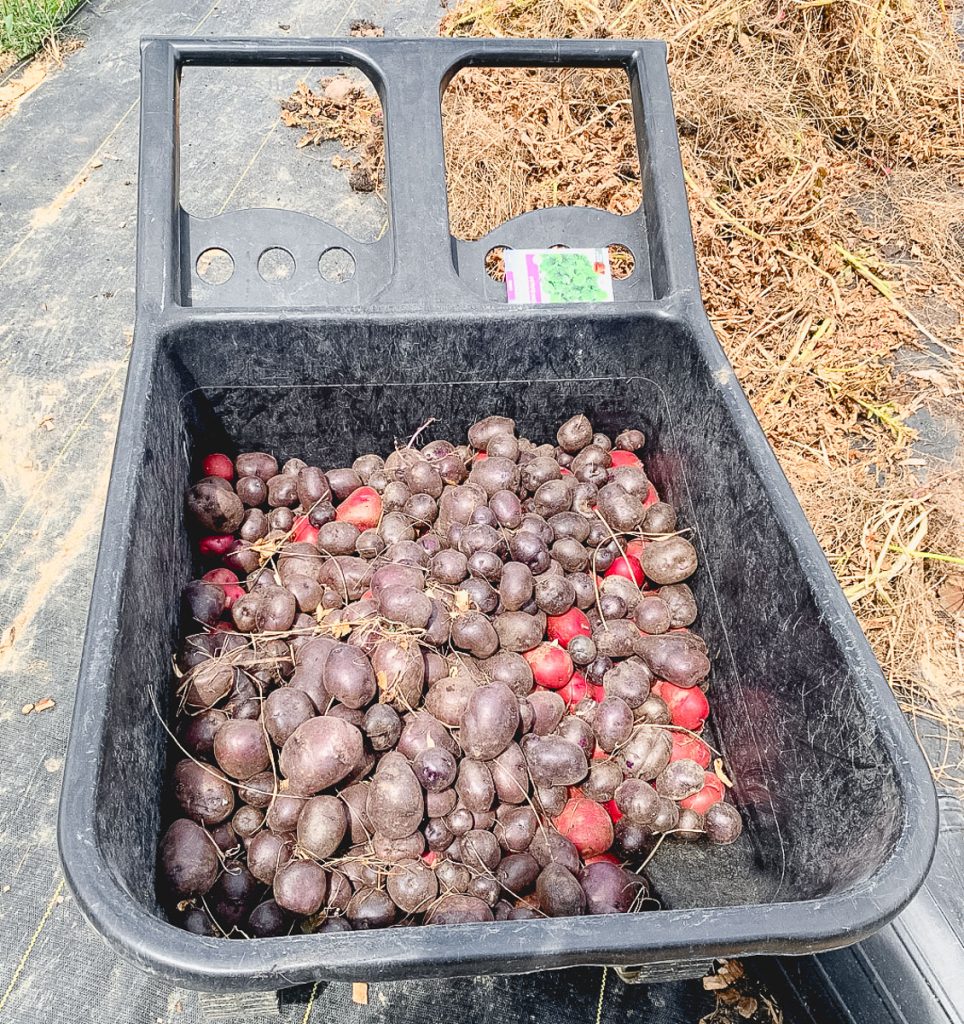
How Do I Know My Potatoes Are Ready to Harvest?
Knowing when to harvest potatoes is essential for getting the best yield and quality. Here are a few signs to look for when determining if your potatoes are ready:
- Plant Dying Back: One of the most obvious signs that your potatoes are ready to harvest is when the plant itself begins to die back. The leaves will start turning yellow and wilting down to lay on the ground. This indicates that the tuber growth has slowed, and the potatoes have reached their full size. Tip- Don’t let the potato plants die and wither away completely or it can be hard to locate the tubers and you risk having to dig around much longer trying to find them. Ask me how I know!
- Check the Potato Skins: Mature potatoes will have firm, intact skin. If the skin rubs off easily, the potatoes may not be fully mature yet. You want the skin to be well-set, which usually happens after the plant has died back.
- Test Digging: If you’re unsure whether the potatoes are ready, dig up a few tubers from the base of the plant. If they are the size you’re expecting and the skin doesn’t peel off easily, it’s time to harvest. If they’re smaller or the skin rubs off, replace the dirt around the tubers and give them a few more weeks to grow and mature in the soil.
- New Potatoes: If you prefer small, thin skinned new potatoes, you can harvest them earlier in the season when the plants are still flowering and before the foliage dies back. These potatoes will be smaller and tender, perfect for quick cooking. No peeling required!
When Is the Best Time to Plant Potatoes?
The best time to plant potatoes depends on your local climate and growing season. In general, potatoes are planted in early spring once the threat of frost has passed. For many regions, this is typically March or April for most moderate climates.
The key to successful potato planting is ensuring the soil temperature is at least 40°F (4°C) before planting. You can check the soil temperature with a simple soil thermometer.
Planting at the optimal soil temperature helps promote tuber growth and gives your seed potatoes the best start. Planting too early in cold, wet soil can cause the seed potatoes to rot in the ground or not sprout properly.
If you’re in a warmer climate, you might plant potatoes a little earlier, but it’s still essential to consider your last frost date as a guide. In colder climates, you may need to wait until the soil has thawed more and warmed up, which can mean planting later, even as late as April or early May.
For the best results, always use a soil thermometer to check the temperature before planting. Ensuring the soil is at the right temperature will give your seed potatoes the head start they need for a successful harvest in mid-late summer.
Favorite Resources for Seed Potatoes
When it comes to buying seed potatoes, there are several trusted suppliers that offer high-quality options. Some of my favorites include:
- Tractor Supply Company: TSC offers a wide variety of potatoes at an economical price. I have always had a high yield from their seed potatoes and typically get some from them each year.
- Baker Creek Seeds: Offers a unique selection of both common and exotic potato varieties. I have had fantastic luck with Baker Creek products in my 6B Kentucky climate.
- Local Nurseries: My local nurseries not only carry seed potatoes, but they offer varieties I have never found anywhere else! My Amish neighbors save their own seed potatoes from their home garden and sell them in paper bags that include hand written notes about best uses, harvest times, origin etc. Buying local typically means the best customer service too! My neighbors are always eager to answer questions about the varieties they sell and have plenty of first hand experience to give good information. I prefer buying locally sourced plants and seed potatoes when I can!
Want to Skip the Hard Work? Plant Potatoes Using the Ruth Stout Method:
For those looking to learn about the easiest way to plant potatoes, check out my article on how to plant potatoes in hay, following the Ruth Stout method, which is great for improving existing soil quality and reducing weeds.
This method skips mounding inches of soil above the potatoes each week and instead buries the potatoes in hay which blocks the sun and provides a well draining, nutrient dense growing medium for potatoes. Ruth Stout is the queen of working smarter, not harder. Check out more of her methods in this article here.
In summary, potato plants generally take anywhere from 80 to 120 days to grow, depending on the variety and climate. By selecting the right type of potato for your growing season and providing proper care, you can enjoy a bountiful harvest of delicious potatoes.
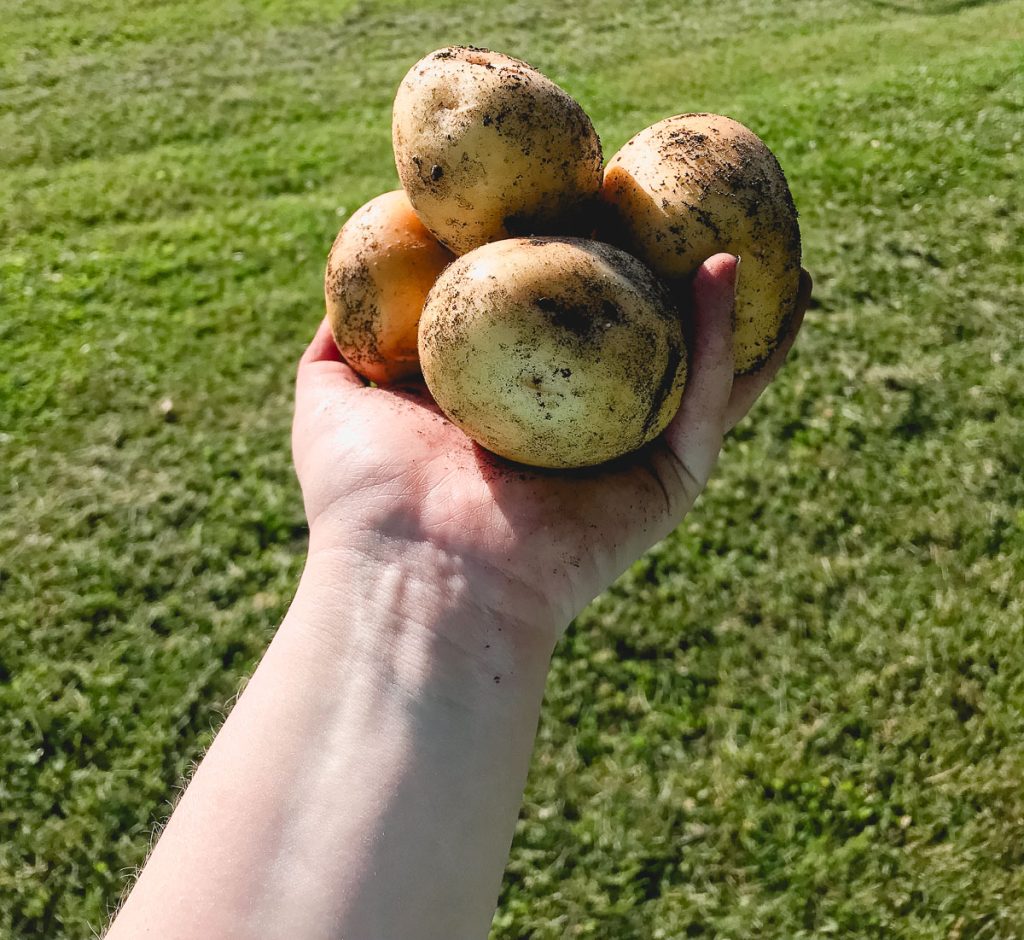
Make sure to choose varieties that suit your climate and soil conditions for the best results.

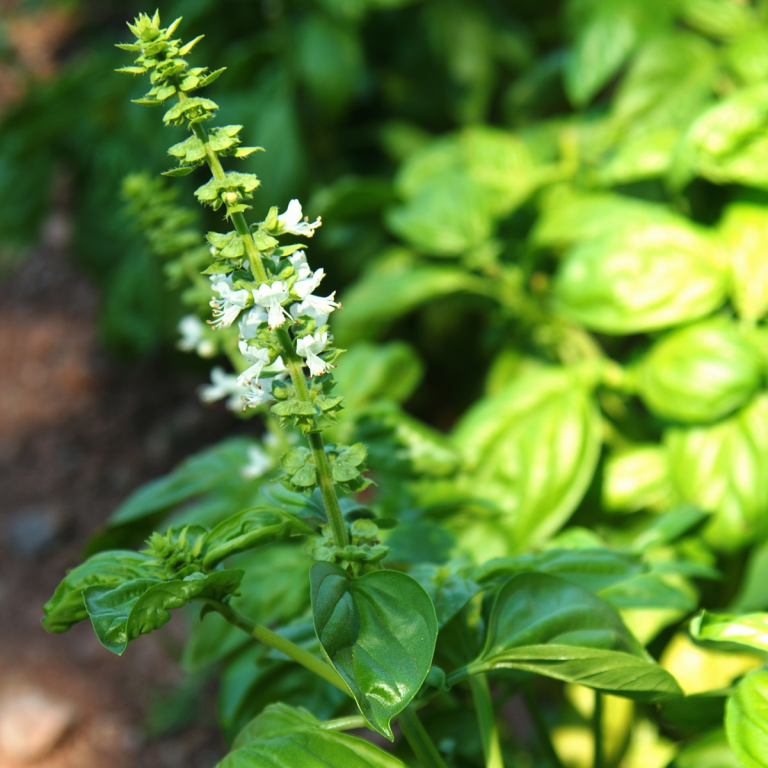
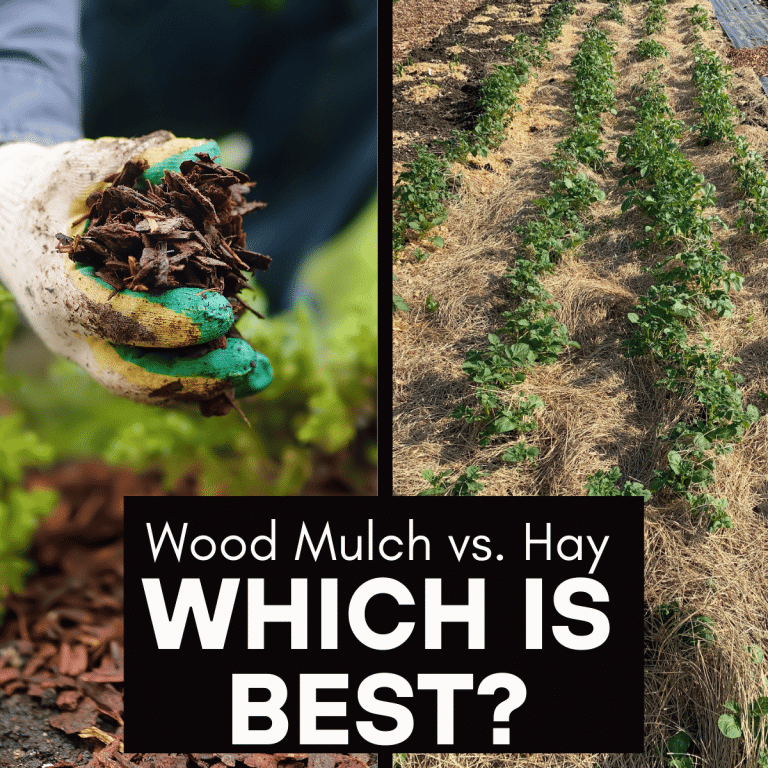
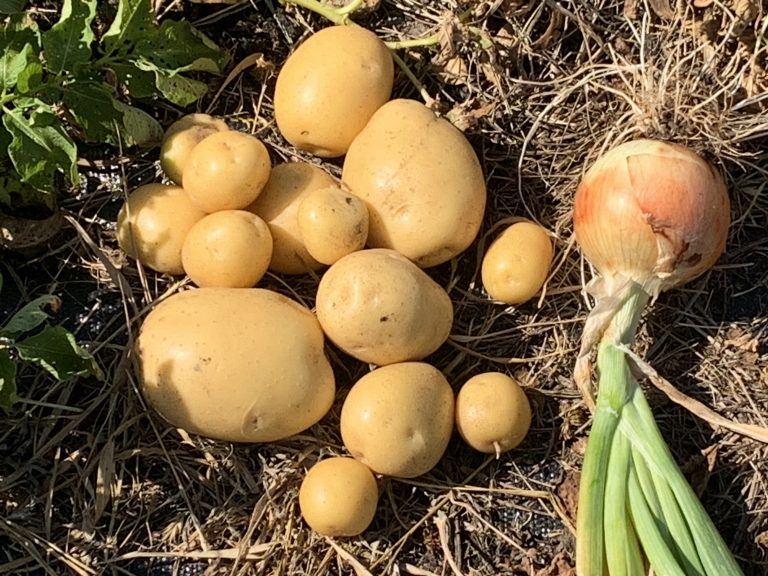
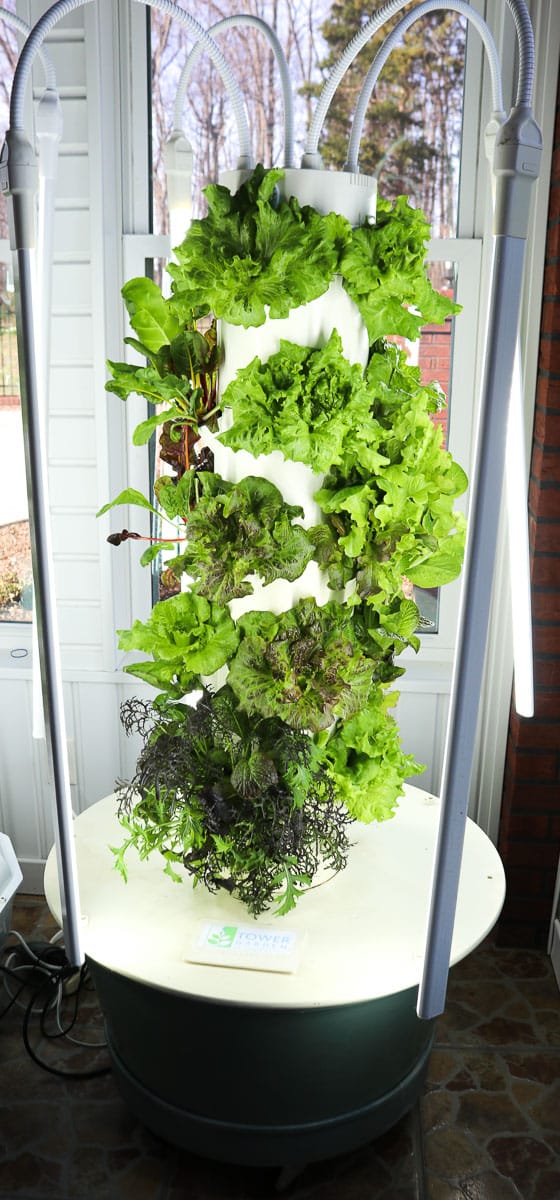
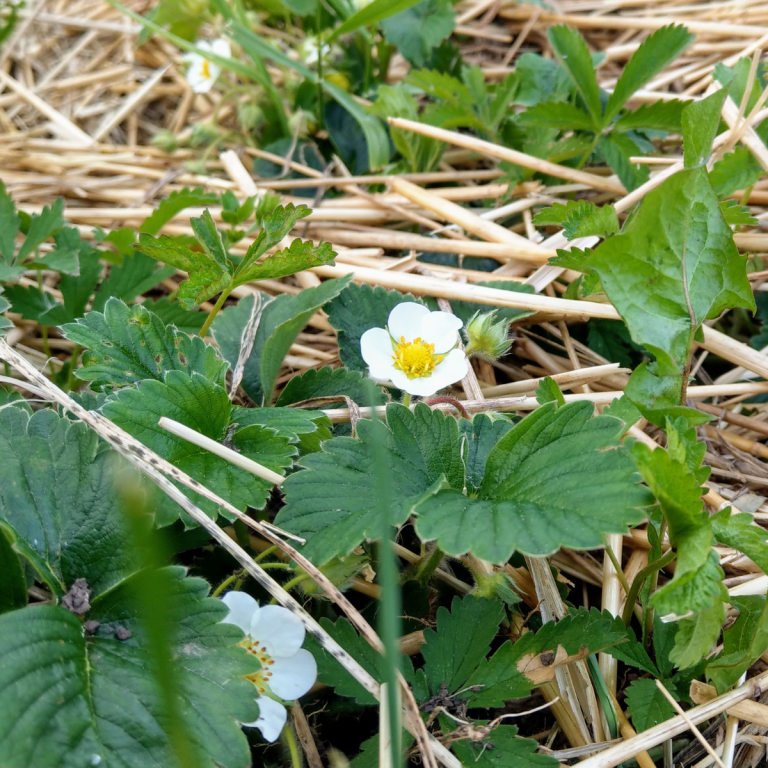
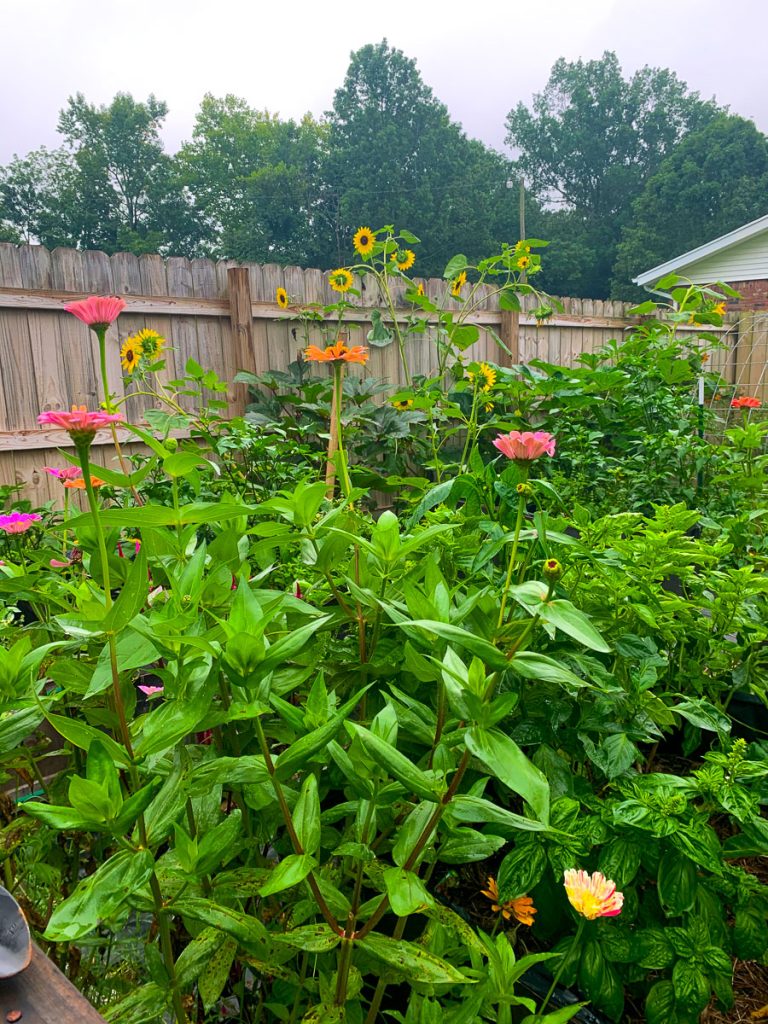
Great tips on potato planting! Ruth Stout is one of my favorites!
Thank you! She was definitely a gardening pioneer!